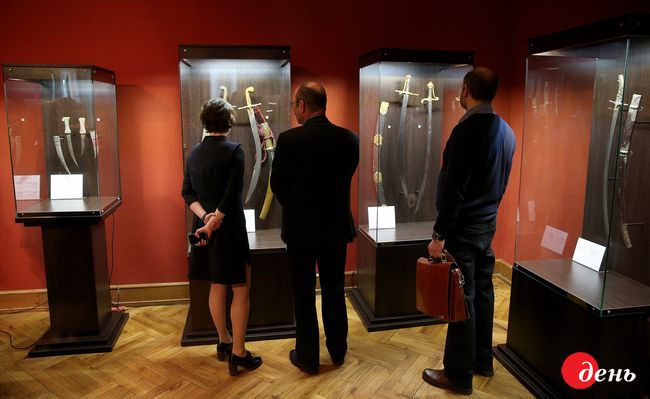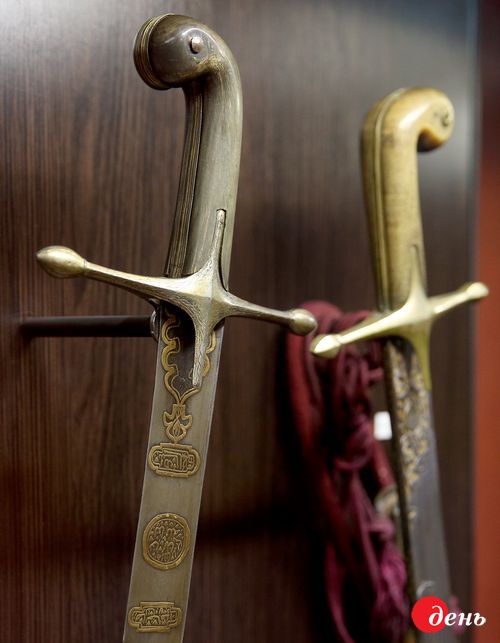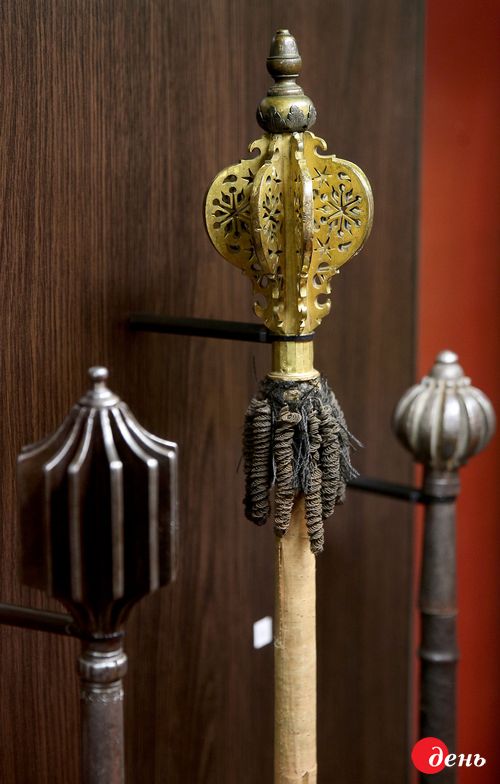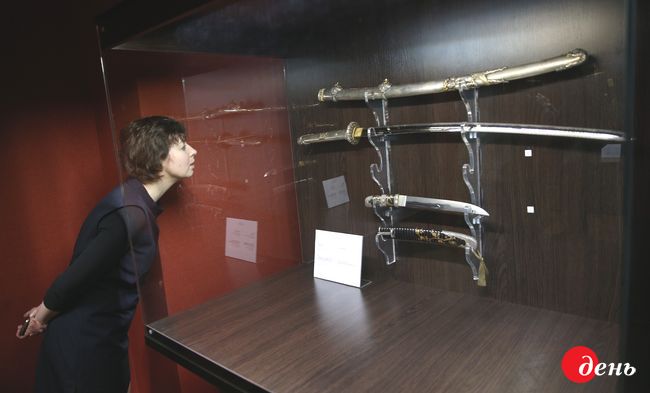The exhibition is composed of about 70 items. The most ancient blade comes from the beginning of the 15th century – a masterpiece by a renowned Japanese master Morimitsu. Apart from swords and sabers, the display also includes arrowheads, maces, and armor elements. The exhibition “The Way of the Warrior – One for Two. Cossack and Samurai Weapons from the Collection of Feldman Family Museum” is dedicated to the military prowess of Ukrainian and Japanese cultures. The project is presented by the international charitable organization “Oleksandr Feldman Foundation.”
A MIX OF TRADITIONS
“Ukrainian masters often used to reproduce weapons, widespread in other countries, or fused the swords from parts, imported from Europe and the East,” says Yevhen Sivachenko, director of Feldman Family Museum, the museum for private collections of Oleksandr Feldman. “Certain types of Iranian, Turkish, Hungarian, and Polish weapons were popular among the Cossacks. However, Ukrainian weapon smiths brought their own fine details into their work, to show that it belonged to them,” continues Sivachenko.

There are only several sabers, which one can attribute to Ukrainian sword smiths with the absolute certainty. One of such sabers is presented at “The Way of the Warrior – One for Two.” The exhibit comes from the end of the 17th – early 18th centuries. “This saber generally follows the Iranian type, but the hilt, the grip, and the crossguard are more European. The ornament confirms the Ukrainian origin of the weapon,” says Sivachenko.

A PIERCING COUPLE – UNDER SAMURAI’S BELT
In Japan, where traditions are highly honored, no types of samurai swords are of a local origin. According to Sivachenko, all Japanese swords can be broadly divided into two categories – with a straight blade, and with a curved blade. The straight-bladed have Chinese origins; the curved ones come from Korea.

A samurai wore two swords. The long one was called daito, and the short one shoto. The famous katana, which only samurai were allowed to carry, belongs to the class of long blades, unlike wakizashi – a short sword, which was used by merchants and artisans. A katana could be up to one meter long, a wakizashi is usually almost two times shorter. This pair of swords was called “daisho,” a conflation of two words, meaning “the big one” and “the small one.”

A Samurai’s two swords were usually forged in the same style. The swords were worn under the left side of the belt, blade up, in a way that would prevent an enemy from seeing which one is short and which is long.
COMMON VALUES
Samurai and Cossacks existed almost at the same time, but had almost nothing in common. The first were a closed caste, the second – an open military brotherhood. The principal difference lies even within the meaning of the words: “Samurai” means “one who serves” in Japanese, and “Cossack,” according to the most common version, is derived from the Turkic word combination “free man.”

But something unites these phenomena. Sivachenko explains: “For the modern Ukrainians, Cossacks embody the best of military qualities and honor. Japanese regard Samurai just the same. Therefore, our exhibition aims to talk about the virtues of different cultures around the world.”
One can learn about the life of medieval soldiers from old swords, still shiny and sharp. The exhibition “The Way of the Warrior – One for Two” is open at the Museum of Western and Oriental Art in Kyiv, through April 30.







